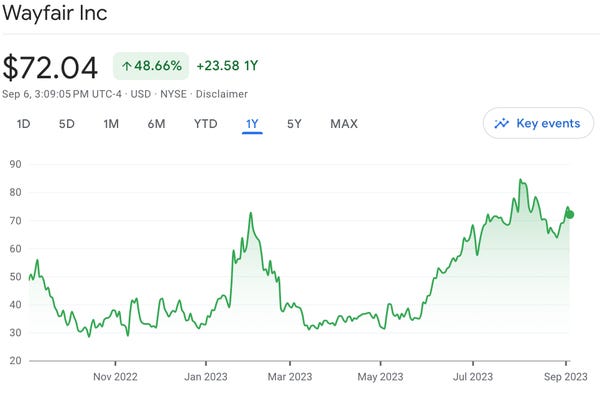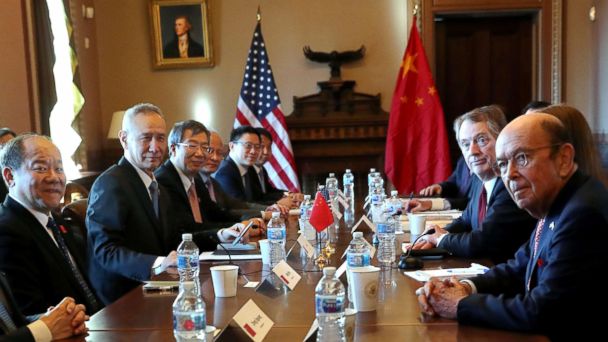The China Factor: Analyzing The Market Headwinds Facing BMW, Porsche, And Other Auto Brands

Table of Contents
Intensifying Domestic Competition
The rise of powerful domestic Chinese auto brands is arguably the most significant headwind facing international players. Companies like BYD, NIO, and Xpeng are rapidly gaining market share, leveraging competitive pricing, advanced technology (especially in electric vehicles), and a deep understanding of local consumer preferences. This domestic surge is dramatically altering the competitive dynamics within the China auto industry.
- Increasing market share of Chinese EV brands: Chinese EV makers are not just competing; they are aggressively expanding their market share, often outpacing international rivals in sales growth. This is particularly evident in the rapidly expanding electric vehicle market China.
- Aggressive pricing strategies from domestic competitors: Domestic brands are frequently undercutting international competitors on price, making their vehicles more appealing to a price-sensitive segment of the Chinese market.
- Superior understanding of Chinese consumer preferences: Chinese brands are acutely attuned to local tastes, design preferences, and technological expectations, allowing them to tailor products and marketing campaigns for maximum impact.
- Rapid innovation in technology and features: Domestic manufacturers are investing heavily in research and development, leading to rapid innovation in areas like autonomous driving technology and connected car features.
Shifting Consumer Preferences and the EV Revolution
Chinese consumers are increasingly prioritizing electric vehicles (EVs) and other green technologies, demanding greater innovation and sustainability from automakers. This shift isn't just a trend; it's a fundamental transformation of the market, necessitating a significant investment in new technologies and manufacturing capabilities for international brands. The luxury EV market China is especially competitive.
- Growing demand for EVs and hybrid vehicles: The Chinese government's aggressive push for electric vehicle adoption is driving consumer demand, creating a massive opportunity but also immense pressure to adapt.
- Preference for technologically advanced features: Chinese consumers, particularly younger generations, are early adopters of technology and expect cutting-edge features in their vehicles.
- Increased focus on sustainability and environmental responsibility: Environmental awareness is growing in China, leading to a greater preference for eco-friendly vehicles and sustainable manufacturing practices.
- Challenges in meeting stringent emission regulations: China's increasingly stringent emission regulations pose a significant challenge, requiring substantial investments to meet compliance standards.
Geopolitical and Economic Uncertainties
Geopolitical tensions and economic uncertainties in China introduce considerable volatility for international automakers. Fluctuating currency exchange rates, potential supply chain disruptions, and broader economic slowdowns create significant challenges impacting pricing, production, and overall market stability. These risks are inherent to operating within the China auto industry.
- Impact of trade wars and tariffs on import costs: Trade disputes between China and other countries can significantly impact import costs, affecting the competitiveness of international brands.
- Currency fluctuations and their effect on profitability: Sharp fluctuations in the Chinese Yuan can significantly impact the profitability of international automakers operating in the region.
- Supply chain vulnerabilities and logistical challenges: Disruptions to global supply chains can severely impact production and delivery schedules.
- Uncertainty surrounding government policies and regulations: Changes in government policy and regulations can create uncertainty and require significant adjustments from international players.
Navigating Regulatory Hurdles and Local Content Requirements
China’s complex regulatory environment and increasing local content requirements demand substantial investment in compliance and localized production. These hurdles add to operational costs and necessitate strategic partnerships with local suppliers to navigate the intricacies of the Chinese automotive regulations.
- Stringent emission standards and safety regulations: Meeting China's demanding emission and safety standards is crucial for market access and requires significant investment.
- Requirements for local sourcing of components: Increasingly stringent local content rules mandate the sourcing of a significant portion of vehicle components from domestic suppliers.
- Complex bureaucratic processes and licensing procedures: Navigating the bureaucratic processes and obtaining necessary licenses can be time-consuming and challenging.
- Challenges in navigating constantly evolving regulations: The regulatory landscape in China is constantly evolving, requiring continuous adaptation and monitoring.
Conclusion
The "China factor" presents a complex set of headwinds for BMW, Porsche, and other international automotive brands. Successfully navigating this dynamic market requires a nuanced understanding of consumer preferences, the intensity of domestic competition, the inherent geopolitical uncertainties, and the complex regulatory landscape. To thrive in this crucial market, international automakers must prioritize strategic partnerships with local players, invest heavily in electric vehicle technology and localized production, and demonstrate an ability to adapt swiftly to the ever-changing dynamics of the Chinese automotive market. Mastering the China factor is not just an advantage; it’s essential for long-term success in this vital market.

Featured Posts
-
 Compare Elizabeth Arden Prices Walmart Vs Others
May 09, 2025
Compare Elizabeth Arden Prices Walmart Vs Others
May 09, 2025 -
 The Snl Impression That Upset Harry Styles
May 09, 2025
The Snl Impression That Upset Harry Styles
May 09, 2025 -
 How Jazz Cash And K Trade Are Revolutionizing Stock Market Access
May 09, 2025
How Jazz Cash And K Trade Are Revolutionizing Stock Market Access
May 09, 2025 -
 Polish Womans Madeleine Mc Cann Impersonation Leads To Stalking Charges
May 09, 2025
Polish Womans Madeleine Mc Cann Impersonation Leads To Stalking Charges
May 09, 2025 -
 Fentanyl Crisis A Lever In U S China Trade Negotiations
May 09, 2025
Fentanyl Crisis A Lever In U S China Trade Negotiations
May 09, 2025
